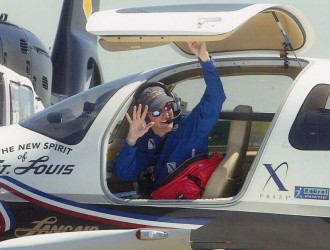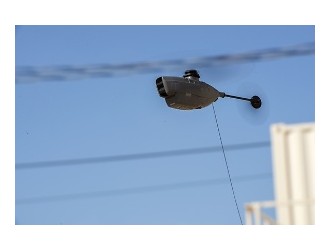By THOMAS P. TURNER
The time has come for us to stop thinking about flying safety. only a minority of the pilot population wants to hear about it.
Tell a pilot you think something is unsafe, and he or she will counter that they feel it’s an acceptable risk. Nothing about flying is perfectly safe, except not flying at all.
Safety is a very subjective standard. No one thinks they are unsafe. But rarely are they making that judgment objectively.
We define safety as the absence of accidents — but is “not crashing the airplane” really the best we can do?
Safety is not a strategy
Safety is an outcome, not a strategy. We make choices we perceive to be safe, but the result still depends on how well we fly and manage the airplane.

When an examiner hands you a temporary airman certificate he or she tells you that you have a “license to learn.”
One of the biggest problems in aviation “safety” is that pilots are given structure up to the point of the checkride, but no guidance on what to do afterward. We’re left to exercise that “license to learn” on our own…to learn haphazardly, if we learn at all.
In far too many cases, instead of growing as a pilot, we let our skills atrophy to the minimum necessary to get away with the specific type of flying we usually do…as long as nothing unusual happens.
Instead of safety, we should use the word mastery as the goal we strive to attain.
Mastery says you meet and exceed objective standards. A goal of mastery affirms that passing a checkride signifies completing only the first phase of a lifelong odyssey, not the end of learning.
Unlike saying, “I fly safely” (which sounds passive), to say “I fly with mastery” indicates an active commitment to high standards, including continuous improvement using objective measurements of professionalism that produce results.
For example, I continually compare my performance to the standards I was required to demonstrate on my ATP checkride. But even before I was preparing for my ATP Practical Test, I used ATP standards as my goal.
I use this objective measure when debriefing my performance after a flight. Did I fly that approach to ATP standards? Did I touch down on speed and in configuration in my identified landing zone? If not, what do I need to do to attain that level of mastery?
The Airman Certification Standards/Practical Test Standards are measurable indicators of aircraft mastery. Anything less means you’re failing to pursue mastery of flight.
Earn your stripes
The stick-and-rudder skills of the Practical Test Standards/Airman Certification Standards are still just part of what it takes to truly master your aircraft. As Pilot-in-Command you need to act like an ATP. That’s the skill our passengers expect us to have, and the level of expertise we want and need the public to perceive general aviation pilots to be — the captain of an airplane.
The universal symbol of the captain of an aircraft is the four-stripe epaulet. These four stripes symbolize the experience, expertise and professionalism of an airplane commander. They identify specific things you can do to earn those stripes after earning your wings — as you exercise your license to learn.
Mastering your aircraft (not just “being safe”) requires mastering each of four “stripes”:
The specific aircraft, including its technology;
The environment, including airspace, air traffic control (as required) and weather;
Human factors, including fatigue management and situational awareness;
Pilot responsibility and command — something given very little attention in pilot training, but that is the essence of mastery of flight.
“Earning your stripes” is equally applicable in a Light-Sport Aircraft or Piper Cub as it is in a twin Cessna, a Baron, a PC-12, a King Air and a single-pilot Citation Mustang. The only distinction is the topics and tasks you must address to develop mastery of the airplane you fly, in the way you fly it.
Mastery is not something you pursue and then “graduate.” It is the life-long process of retaining existing skills as you develop new ones in achieving mastery of your aircraft.
If you fly with mastery you will still not be completely safe. You accept risk in all things, and in personal and business aviation you freely choose to take on much more risk (and responsibility) than most people seem willing to accept.
But you will be as safe as the circumstances that arise in the conditions you choose to face will permit. It’s up to you to make a masterful decision about the conditions, and be ready to masterfully handle any circumstances you then face.
So the time has come for us to stop thinking about flying safety. We need to think about attaining and retaining the skills and experiences needed to master our aircraft and the environment in which we choose to fly.
If you master your airplane, you and those who place their trust in you will be as safe as can be possible.





